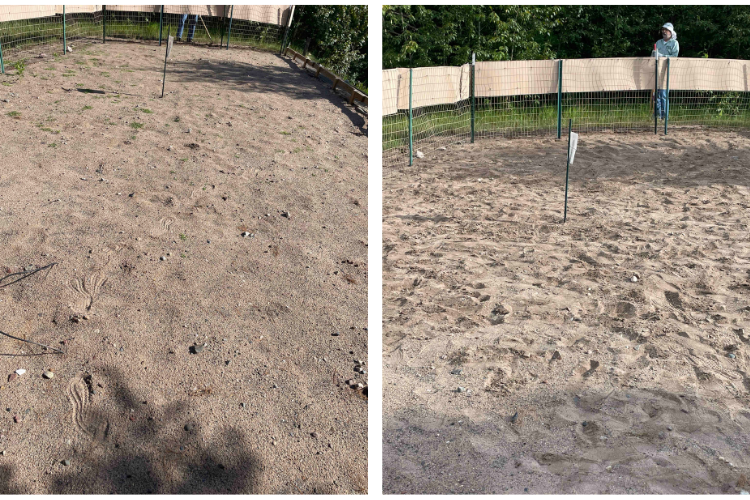2024 | 2023 | 2022 | 2021 | 2020 |
HIGHLIGHTS FOR 2023
ORNATE BOX TURTLE PROGRAM
This year’s program was again focused on managing a variety of habitats within the site. Our Black Oak tree thinning continued from the winter of 2022 through March of 2023, removing trees to provide more optimal microhabitats for many birds, small mammals and reptiles. In the fall we restarted our Oak tree cutting after the first hard frost and continued to the end of the year. We search for and remove exotic woody brush during the same period.

During April and May we wandered the site to remove rosettes of Spotted Knapweed and Mullein. From mid-May through mid-June we continued pulling exotics (Garlic Mustard, Hedge Parsley and other noxious weeds).
For the past four years (2020-2023), we have been working to eliminate four Sumac clones, three of which were very large. Two of the three clones had been treated with Garlon 4 using dabbers to treat the bottom four inches of every stem. We repeated this method in 2021 and 2002. The third clone was first treated in 2021 and was retreated in 2022 and 2023. By 2023, very few re-sprouts were found in the three previously treated clones, and those stems were retreated. In 2023, we started treating the largest of the four clones. Prior to the treatments, a spring prescribed burn top-killed most of the fourth clone. We foliar sprayed and swabbed stems three times in 2023, once in late June, once in late July and early August and retreated the entire clone in early October of 2023. We will see how things look in 2024.
We continued thinning Black Oak trees from mid-October through December.
In 2023 we worked at the site on 68 days totaling 414 hours. We also accounted for 5,510 miles which the DNR-NHC can use as fiscal match.
WOOD TURTLE PROGRAM
If you have seen the website update for 2022, you will see that in 2023 Mother Nature returned once again to this nest site. We thought our repair work in the spring of 2023 had resolved our issues. We were wrong! Below is a photo that we took in October of 2023. Fortunately, we were able to restore the site that day. The drought, which occurred during most of the summer, caused significant mortality during the incubation period.
This site produced only one clutch of Snapping turtles, presumably because Snapping turtles bury their clutches deeper in the soil.
The widespread drought impacted hatch rates across most of northern Wisconsin. However, we did account for 360 hatchling Wood Turtles from our 30 nests sites.
